This was my fourth year of growing watermelons in Melbourne. Surprisingly, watermelons are very easy to grow in our Melbourne climate. You use similar methods to those methods used in growing pumpkins, but they take far less space than your average pumpkin vine. If you can spare a few square metres of garden space, then I definitely recommend having a go at growing them. This year I even grew some on the shed roof!
Here’s Leaf Root & Fruit’s guide to growing Watermelons in Melbourne. I have also successfully grown Cantaloupe (Rockmelon) and Honeydew melons in Melbourne, using the same methods.
When to Grow Watermelons in Melbourne
Watermelons originated from Central Africa and require a warm, humid climate. Most varieties are harvested 3 to 4 months after planting. So, to ensure that they have a long enough growing time over the Melbourne summer, they should be planted from mid-October through to early-November
Watermelon vines are sensitive to frost. So, ensure that you hold off sowing seeds until all danger of frost has passed. The seeds require warm soil temperatures. I have successfully germinated watermelon seed in pots, in a greenhouse, and then transplanted the seedlings. However, I find that the disruption of the seedlings during transplanting, means that any early start, is negated by the time it comes to harvest. If you do start plants indoors, then take extra care when planting out, so as not to disturb seedling roots.
Watermelon vines must have full sun to develop and ripen the fruit.
Preparing the soil for growing watermelons
Watermelons can tolerate a wide range of soil types. But, they do need good drainage.
Prepare the soil prior for planting by adding plenty of well decomposed animal manure or home-made compost. It’s best to avoid poultry manure or rich organic fertilisers as this can cause over production of male flowers at the expense of female flowers.
A soil pH of 6.5 to 7 is preferred, but not essential. If necessary, lime may be added to the soil to increase the soil pH and help to supply calcium. If your soil is neutral to alkaline, gypsum can be added to the soil to supply calcium without altering the soil pH. Calcium deficiency can cause problems in fruit development so it is particularly important for growing melons.
Sowing watermelon seeds
Create raised mounds of soil to improve drainage. Add a shallow depression in the top of the mounds to assist with watering and plant 2 or 3 seeds in the depression. When they germinate, thin out the plants, so that only the strongest seedling remains.
Allow an area of around 2sq metres per plant.
Seeds should germinate within 14 days providing the soil is warm.
Caring for watermelon vines
Despite their names, watermelons don’t like any more watering than other veggie crops. In fact, over-watering them can result in bland, tasteless (although very juicy) fruit. Keep the soil moist with regular watering, but not waterlogged.
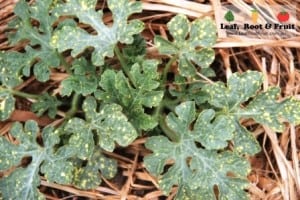
This variety of watermelon, called ‘Moon and Stars’ has yellow spots on both the leaves and the fruit.
Watering plants with liquid seaweed, compost tea or a commercial formula such as Seasol will help improve disease resistance and supply additional trace elements during the growing season.
Pinching out the tips of developing vines will help to encourage branching. This keeps the vines compact and can result in more fruit.
Just like other cucurbits, watermelons produce separate male and female flowers on the one vine. It is common for vines to initially only produce male flowers. When female flowers do form, they will always be far fewer in number than male blooms.

Borage is great for encouraging pollinators like bees into the garden to fertilize your watermelon plants
Bees are the main pollinators of watermelons with flowers most receptive to fertilisation during the early morning. Make sure you have plenty of companion flowers to encourage bees into the garden.
Just like zucchinis and pumpkins, watermelon flowers that have not been pollinated develop small, infertile fruit. These develop soft rot at the flower end of the fruit or turn yellow and eventually fall from the vine. Hand pollination is one way to ensure successful fruit formation, although with my watermelon crops, I haven’t had to resort to this method yet.
Each plant can be expected to produce three to six fruit, providing they are watered regularly and receive adequate nutrition.
Watermelon Pests and Diseases
Caterpillars can occasionally feast on watermelon vines. Most are picked off by birds, or you can conduct regular “search and destroy missions”.
Aphids love to feed on new shoots. These sap sucking insects can spread virus diseases. There is no control for virus affected plants and virus diseases can be transferred to the next generation of plants via infected seed. Aphids can produce a substance called honeydew. This can promote sooty mould and debilitate the plants. See our guide to controlling aphids for dealing with these pesky critters.
As fruit approaches maturing, you will need to protect it. Rats, mice, crows and possums all find watermelons tasty too!
How do you know when to harvest your watermelon?
Just like harvesting pumpkins, the traditional practice for determining ripeness is to tap the fruit and listen for a hollow sound. Deterioration of the vines including shriveling of the tendrils on the fruit stem is another sure sign that your fruit is ripe for the picking.
Watermelons have a variable shelf life according to variety. When harvesting the fruit, be sure to clip a short section of stem with the fruit rather than pull it from the vine. This will minimise damage. Handle watermelons carefully so as to avoid damage to the skin.
Watermelons are not a particularly long keeping fruit, so eat them quickly. Whole watermelons can be stored for up to two weeks in a cool, dark area, OUT of the refrigerator. Storing whole watermelons in a cold refrigerator can cause the flesh to break down.
Exposing harvested fruit to sun and heat will cause skin scalding and deterioration of the flesh. Once the watermelon is cut, it can be stored in the refrigerator and chilled for eating. However, the melon should be eaten within a few days.
Watermelon varieties to consider planting in Melbourne.
There are many heirloom varieties of watermelon available to gardeners in Melbourne. Varieties can produce fruit varying in weight from less than 4 to over 18 kilograms. The flesh may be red, pink, orange, yellow, apricot or white depending on the variety selected. Skin colour is also extremely variable with many different colours and patterns.
Moon and Stars
Large oval fruit, with dark green skin dotted with large yellow moons. Yellow flecks that resemble tiny stars are also found on the fruit and the foliage. Flesh is sweet and pinky/red in colour. The fruit keeps longer than other varieties. This was the first year that I grew Moon and Stars. I found this variety to be unreliable and poor yielding. Although, I may just have had a bad batch of seed. We tried growing this variety as part of our Giant Edible Trellis, but the vines suffered from powdery mildew and we only harvested one insignificant fruit off a total of 4 vines. Interestingly, the plants refused to climb and instead preferred to sprawl along the ground.
Sugarbaby
A very sweet, early maturing small round fruit with dark green skin produced on
compact vines. It is ideal for home gardeners, because of its smaller size (both vine and fruit). This has been my most successful variety of watermelon. The small plants don’t take much space, and they were the variety I planted on the shed roof this year. The fruit are easy to fit in the refrigerator to chill and are a perfect portion size for one or two people.
Icecream
Let’s face it, a variety watermelon with the name “Icecream” has got to be good. Named for its unusually high sweetness, this variety of watermelon has huge fruit. This year I harvested one that weighed 7.4kg! The skin has a light green tiger stripe pattern on it.
Watermelon varieties that I haven’t grown yet, but will trial next season:
Blacktail Mountain
It is an early maturing variety which, suits Melbourne’s cooler climate, as it is tolerant of a wide range of climates [including cooler temperatures, drought and heat].
It is round like a soccer ball, with dark green rind and sweet red flesh.
Cream of Saskatchewan
A small round fruit, striped green and yellow, with a sweet pale yellow-white flesh. This watermelon splits when it ripens, so you’ll never see it in the shops.
Orangeglo
A big, oblong watermelon with light green, tiger striped rind. The flesh is a bright orange colour with excellent flavour. It is a very productive variety.
Crimson Sweet/Warpaint
A round, light green fruit with dark stripes and thin skin. It has sweet red flesh with small seeds.
Apparently it has good disease resistance and is suitable to many climates and soil conditions. Stores well.
Have you had a go at growing watermelons in Melbourne? How did they turn out?

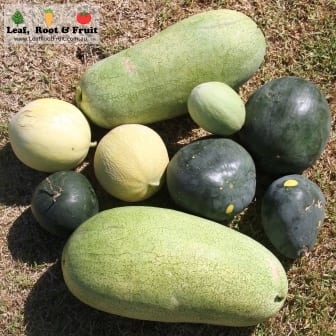
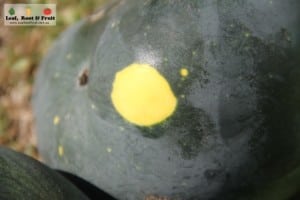
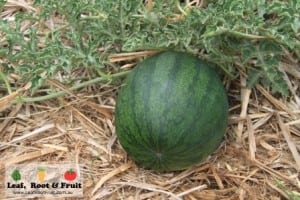
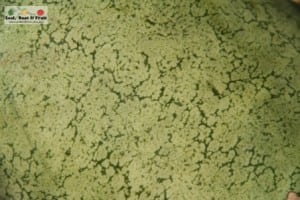

Two years ago I had a small crop of cricket ball sized melons from a mix of Diggers seed – then last year nothing! This year the mystery has been solved – an elderly neighbour is picking all my flowers
Hi Ania, I bet that had you stumped for a while! Thanks for sharing your story.
Do you have any updates on the other varieties of Watermelon you grew? Can you suggest a suitable Rockmelon variety for Victoria?
Hi Colleen,
Unfortunately last year we unexpectedly had to move house over the summer (the joys of renting!). As such we didn’t get an opportunity to traial any new varieties and don’t have an update for you.
‘Hales Best’ did really well for us last time we grew them. This year were also trying ‘French Charentais’ and ‘Ha Ogen’. we’ll keep you posted on how they perform!
Good Luck and Happy Gardening!
Duncan
I picked up a seedling from the local nursery called Rockmelon ‘Prescott Fond Blanc’. Had never heard of it before, but after a bit of research found out it was a heirloom variety from France that dates back before 1850. It was so easy to grow, and I got 4 fruit from one plant. Actually looks like a weird pumpkin, but the skin was just as fragrant as the sweet fruit inside. Give it a go.
Thanks for the tip Glenn. I might try and hunt this one down and try it this summer also.
I grew Sugar babies successfully last year, got 3 fruit from the one plant. Made the mistake of storing in the fridge unfortunately and one became in-edible as a result. Shattering. I’m giving War Paint a go this year. Will report back with results.
Great! Looking forward to the update Glenn. Thanks for sharing.
Good Luck and Happy Gardening!
My husband has been growing rock melon and water melon a few years now si this year I planted sap melon which are growing and fruiting in werribee so hopefully we ll eat some in a few months I grew them from seeds of one that I bought
Thanks for the update Pauline. Please keep us updated on progress!
Good Luck and Happy Gardening!
Duncan
How did you grow the watermelon on the shed roof?
Hi Dee,
We grew them in large polystyrene boxes. We used a watering wand to reach up and water them regularly.
Hope that helps!
Duncan
Very informative article. I have placed my seeds in seed growing mix for over a week now, nothing yet. I am encouraged by your article. I am on The mornington Peninsula. If I have success, I will let you know.
Hi Ross, patience is a virtue. Watermelon seeds need warm soil to germinate. We didn’t plant our seeds until early December this year as the soil was too cold previously to then. Hopefully the growing season will still be long enough to harvest some fruit.
Hope your crops are now booming?
Duncan
From where can I buy watermelon seeds of Moon and Stars, Sugarbaby and Icecream ?
Hi Raj,
A quick Google search should be able to help you out there. There’s plenty of online seed companies these days so you should be able to source them easily enough.
Happy Gardening!
Duncan
Great article and I’m pleased to see that people are still interacting with it in 2023!
This is my first time growing watermelon and I’ve gone with the sugar baby variety, successfully germinated 6 plants, 8 weeks ago in seedling trays, now separated and have been living in 8cm diameter pots. I think they’re reaching a size where I’m happy for them to move out of my living room. I’m hoping to experiment and plant in various places around my garden to see which location gives me the best outcome, as we don’t have a spot which receives a ‘true’ full sun. Wish me luck!
Hi Caitlin,
I’m glad that you’ve found the post useful. I’ll be keen for an update from you at the end of your watermelon trial.
Good luck with the season ahead.
Duncan
I moved to the South East of Melb, in Gippsland and started a vege garden in raised beds. One day I noticed this vine growing out of the ground and said to my son it looks like a weed. He said to wait for ut to grow larger and see if it produces flowers and low and behold it did. Not sure where the seed/s came from as I did’nt plant any. But to my excitement saw these little fruit forming with green stripes and my son said they are watermelons, but I was not sure which variety they were until I just read this article of yours and saw the picture which happens to be Sugarbaby. There are 3 fruit on the vine and sadly the 4th little one dried up. There is also another vine coming up in another area with one fruit on the vine so far. It’s so exciting as never thought of growing watermelons. It would be close to 2.5 months now so have to be patient for them to mature. I’ve noted the other varieties from your article and would like to grow them if I can get the seeds. Tks for your article.
What a fantastic story. I hope they were tasty!
Happy gardening
Duncan